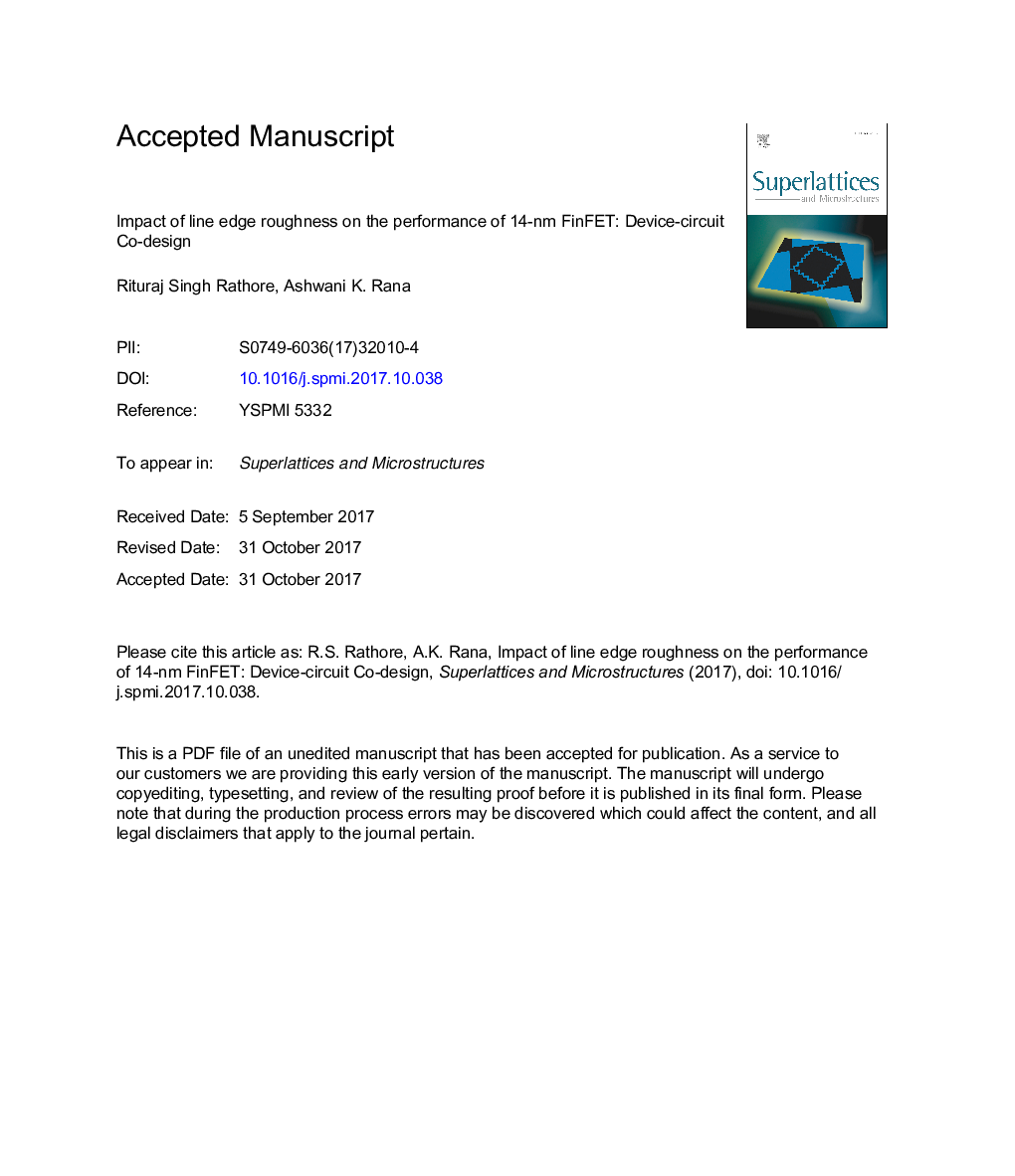| Article ID | Journal | Published Year | Pages | File Type |
|---|---|---|---|---|
| 7939248 | Superlattices and Microstructures | 2018 | 20 Pages |
Abstract
With the evolution of sub-20Â nm FinFET technology, line edge roughness (LER) has been identified as a critical problem and may result in critical device parameter variation and performance limitation in the future VLSI circuit application. In the present work, an analytical model of fin-LER has been presented, which shows the impact of correlated and uncorrelated LER on FinFET structure. Further, the influence of correlated and uncorrelated fin- LER on all electrical performance parameters is thoroughly investigated using the three-dimensional (3-D) Technology Computer Aided Design (TCAD) simulations for 14-nm technology node. Moreover, the impact of all possible fin shapes on threshold voltage (VTH), drain induced barrier lowering (DIBL), on-current (ION), and off-current (IOFF) has been compared with the well calibrated rectangular FinFET structure. In addition, the influence of all possible fin geometries on the read stability of six-transistor (6-T) Static-Random-Access-Memory (SRAM) has been investigated. The study reveals that fin-LER plays a vital role as it directly governs the electrostatics of the FinFET structure. This has been found that there is a high degree of fluctuations in all performance parameters for uncorrelated fin-LER type FinFETs as compared to correlated fin-LER with respect to rectangular FinFET structure. This paper gives physical insight of FinFET design, especially in sub-20Â nm technology nodes by concluding that the impact of LER on electrical parameters are minimum for correlated LER.
Related Topics
Physical Sciences and Engineering
Materials Science
Electronic, Optical and Magnetic Materials
Authors
Rituraj Singh Rathore, Ashwani K. Rana,
